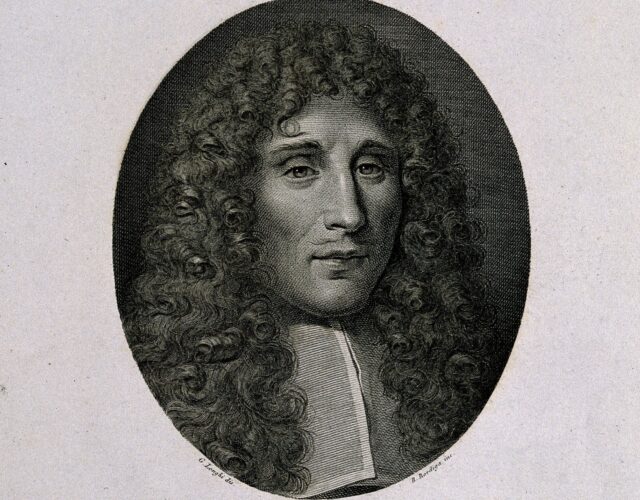There was a time when many of those who investigated nature believed that life could grow from nonliving matter, such as insects sprouting from rotting meat. Belief in spontaneous generation lasted until the 1860s, when Louis Pasteur’s experiments brought germ theory to the world. Yet Pasteur was not the first to doubt spontaneous generation: 200 years earlier an Italian named Francesco Redi conducted his own experiments and came to similar conclusions.
Redi was born in Arezzo in 1626, the son of a physician. He followed in his father’s footsteps and, after graduating from the University of Pisa in 1647, was appointed physician to the Medici court in Florence. While there, Redi joined the Accademia del Cimento, a small group of scholars interested in experimentation. The first mystery he investigated: why are some snakes deadly?
In the 1600s there were many theories as to why snakebites could be dangerous, but little testing had been done. Redi began observing snakes using methods learned at the Accademia. He soon identified and extracted a yellow secretion from glands in the heads of poisonous snakes. Redi then injected the substance into small animals with “sharp slivers of broom” and so discovered the secretion’s deadliness. While dissecting his test subjects Redi found coagulated blood, which led him to conclude the venom was harmless unless injected into the bloodstream. That meant it was perfectly safe for desperate snakebite victims to suck venom out of a wound (although pointless, we now know) and equally safe for people to eat a snakebitten animal. When Redi published his findings in 1664, his fellow experimentalists disputed nearly all his conclusions. Some critics believed venom’s deadly nature came from spirits living within angry snakes (spirits that they also believed could be exorcised, rendering the snakes harmless).
Redi continued to experiment with venom, and this work eventually won his ideas a measure of acceptance. A few years later he turned his inquisitive mind to spontaneous generation.
Redi suspected creatures could not grow spontaneously from dirt and water; they needed to be born from other living things. To test his theory he created an ingeniously simple experiment in which he filled two jars with meat and then covered one with gauze. As the meat putrefied, maggots and flies appeared inside the uncovered jar while the covered jar remained free from insects. Perhaps most innovative was his inclusion of a “control,” now a standard practice in science. The results were published in 1668 but to little effect.
Although Redi was convinced insects could not pop out of dead animals, he was not so sure about what happened in living plants. After observing insects burst from strange, bulbous growths (galls) on various types of vegetation, Redi concluded that plants were able to grow bugs in the same way they grew fruit.
While Redi was a meticulous experimenter, he was far more reckless in other pursuits. When contributing to a new edition of an Italian dictionary, Redi inserted words of his own invention. Other shenanigans were much more elaborate.
Florentines took great pride in their city, and many local scholars, including Redi, went out of their way to bring attention to Florence. Such adoration may have inspired Redi to concoct a hoax in 1678 about the origin of eyeglasses. He described a manuscript written in 1299 by the Florentine Sandro di Pippozzo (who didn’t exist) in which the author states that eyeglasses had recently been invented, thus dating the first written account of eyeglasses to Florence. Redi claimed that the original inventor had been rediscovered by a Florentine monk, Alessandro di Spina of Pisa (also a complete fabrication). Redi’s deceptions eventually led scholars to claim that a Florentine man named Salvino degli Armati was the true inventor of eyeglasses. A monument was erected in the church of Santa Maria Maggiore, inscribed with the words “Here lies Salvino d’Armato degl’ Armati of Florence, inventor of eyeglasses, may God pardon his sins.” The hoax was discovered in the 19th century, but the inscription remains, a permanent reminder of Redi’s mischief.




